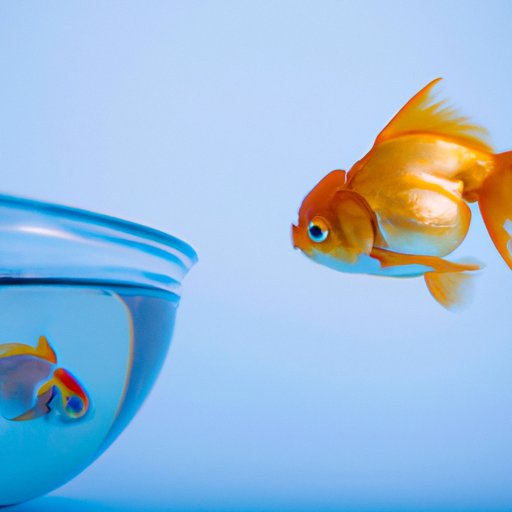Introduction
Goldfish have long been popular as pets, and for good reason. They’re relatively low maintenance, they don’t take up too much space, and they’re easy to care for. But what about their health? Are goldfish healthy? This article will explore the nutritional benefits and health risks associated with keeping goldfish as pets, as well as tips on how to maintain a healthy environment and balanced diet.
Analyzing the Nutritional Benefits of Goldfish
When it comes to nutrition, goldfish need a balanced diet in order to stay healthy. Like other animals, goldfish require proteins, carbohydrates, fatty acids, vitamins, and minerals in their diet. According to a study published in the “Journal of Animal Science”, goldfish need a minimum of 30% protein in their diet to remain healthy.
Proteins can be found in a variety of foods, including flakes, pellets, live food, and frozen food. Carbohydrates, on the other hand, are found mostly in plant-based foods like algae wafers, blanched vegetables, and spirulina. Fatty acids are important for goldfish because they help keep their skin and scales healthy. These can be found in live foods such as brine shrimp and bloodworms. Vitamins and minerals are also essential for goldfish, and can be found in both flake and pellet foods.

How to Ensure Your Goldfish is Eating a Balanced Diet
In order to ensure your goldfish is eating a balanced diet, it’s important to provide a variety of foods. A combination of flake, pellet, live, and frozen foods should be offered. It’s also important to feed your goldfish in small amounts several times a day rather than one large meal. This will help prevent overeating and ensure your goldfish gets all the nutrients it needs.

Examining the Health Risks Associated with Goldfish
While goldfish can be healthy pets if cared for properly, there are some health risks associated with them. Common illnesses found in goldfish include bacterial infections, parasites, and fungal infections. These can be caused by poor water quality or overcrowding in the aquarium. In addition, goldfish can suffer from swim bladder disorder, which is a condition where the swim bladder fails to function correctly, causing the fish to be unable to control its buoyancy.

Tips for Keeping Goldfish Healthy
To minimize the risk of illness in your goldfish, it’s important to provide them with a healthy environment. This means regularly testing the water quality and maintaining the correct temperature, pH, and ammonia levels. Additionally, it’s important to clean the aquarium regularly and avoid overcrowding. Finally, it’s important to keep an eye out for any signs of illness, such as changes in behavior or physical appearance.

Debunking Common Myths about Keeping Goldfish as Pets
There are many myths and misconceptions when it comes to keeping goldfish as pets. The first myth is that goldfish can grow to be very large. While some species of goldfish can reach over a foot in length, most species stay relatively small. The second myth is that goldfish only live for a few years. In reality, goldfish can live for up to 10 years or more with proper care.
The third myth is that goldfish need to be kept in small tanks. While small tanks may be suitable for baby goldfish, adult goldfish need at least 20 gallons of water per fish. Finally, the fourth myth is that goldfish need to be fed frequently. In fact, goldfish should only be fed once or twice a day in small amounts.
Comparing Different Types of Goldfish Food
When it comes to feeding your goldfish, there are a variety of different types of food available. Flake foods are the most common type of food and are usually made from a combination of proteins, carbohydrates, and vitamins. Pellet foods are similar to flakes but are usually slightly larger and more nutrient-dense. Live foods, such as brine shrimp and bloodworms, are also a good source of nutrition for goldfish.
Understanding How to Maintain a Healthy Goldfish Environment
In addition to providing a healthy diet, it’s important to maintain a healthy environment for your goldfish. This includes making sure the water quality is optimal, the aquarium size is appropriate, and the setup is appropriate for the species of goldfish. Additionally, it’s important to use a filter and other equipment to help keep the water clean and free of toxins.
Conclusion
Goldfish can be healthy pets if cared for properly. It’s important to provide them with a balanced diet, a healthy environment, and regular checkups. By following these tips, you can ensure your goldfish is happy and healthy for years to come.
(Note: Is this article not meeting your expectations? Do you have knowledge or insights to share? Unlock new opportunities and expand your reach by joining our authors team. Click Registration to join us and share your expertise with our readers.)
